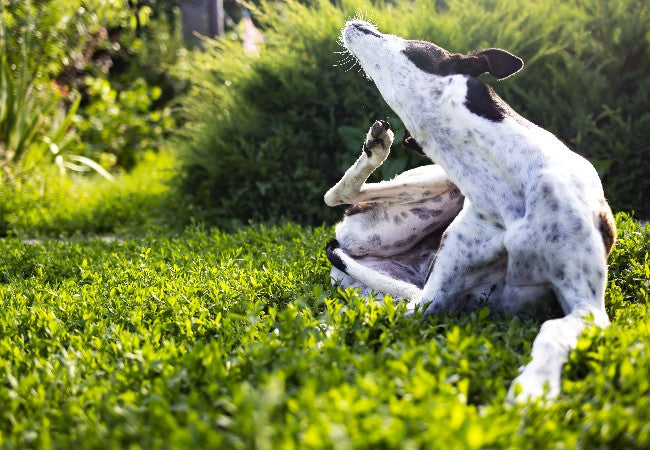Chiggers on Dogs: Vet‑Approved 2025 Guide to Causes, Symptoms & Treatment🐾🌿

In this article
Chiggers on Dogs: Vet‑Approved 2025 Guide to Causes, Symptoms & Treatment🐾🌿
By Dr. Duncan Houston BVSc
Chiggers—tiny larval mites—thrive in moist, grassy environments and can cause significant discomfort in dogs. Though they don’t burrow, their bites inject enzymes that dissolve skin cells, triggering intense itching and possible skin damage. Here's your 2025 vet‑approved guide to understanding, treating, and preventing chiggers in dogs. 🩺
1️⃣ What Are Chiggers?
- Chiggers are the larval stage of Trombiculidae mites, often called harvest mites.
- They attach to areas with less fur—belly, ears, paws, groin—feeding on skin cells via a hardened tube (stylostome) and fall off once full.
2️⃣ Recognizing Chigger Bites
- Signs include intense scratching, raised red bumps or crusts, hair loss, scabs, and raw skin, commonly on the underside, ears, and paws.
- Skin scrapings can confirm mites; vets differentiate chiggers from fleas, mites, allergies or infections.
3️⃣ Vet‑Prescribed Treatment
- Topical or systemic parasiticides (e.g., fipronil, permethrin, pyrethrin dips) effectively kill chiggers.
- Anti-inflammatory meds (prednisone, steroids) help ease severe itching.
- Antibiotics may be needed for secondary skin infections.
4️⃣ Soothing at‑Home Baths & Remedies
- Gentle warm baths with oatmeal, Epsom salts, or phytosphingosine soothe the skin as medication kicks in.
- Ice packs (wrapped) or diluted green tea rinses can ease itching temporarily.
- Avoid alcohol-based remedies, which may worsen inflammation.
5️⃣ Preventing Reinfestation
- Avoid tall grass, leaf litter, and damp woodsy areas during peak seasons (spring–fall).
- Use tick/flea preventives (e.g., Frontline, Revolution, Seresto, NexGard, Simparica) that also target chiggers.
- Keep lawns mowed, remove brush and debris, and treat with acaricides if necessary.
- Wash bedding, towels, and clothing in hot water to remove lingering mites.
6️⃣ Recovery & Outlook
- With treatment, itching often eases within days and lesions typically heal in under two weeks.
- Reinfestation can be prevented through environmental control and year-round protection.
📊 Quick Summary Table
| Step | Action | Why It Helps |
|---|---|---|
| Identify | Inspect skin & vet scrapings | Confirm chigger bites vs. other causes |
| Treat | Parasiticide + anti-inflammatory | Eliminates mites & reduces itching |
| Soothe | Baths, oats, green tea, ice | Relieves irritation |
| Prevent | Avoid habitat, use preventives | Stop future bites |
| Clean | Laundry & yard care | Removes environmental chiggers |
| Monitor | Check skin post-treatment | Ensure full recovery |
🔍 Final Thoughts
Although chigger infestations are temporary, they cause significant discomfort and risk secondary infections. Quick detection, vet-guided parasitic treatment, soothing care, and prevention strategies provide fast relief and protect your dog in 2025. Stay watchful and proactive for a healthy pup! 🐾❤️
Need help with treatment selection, bathing routines, or yard protection plans? Download the Ask A Vet app for personalized vet support anytime. 📱🐶






